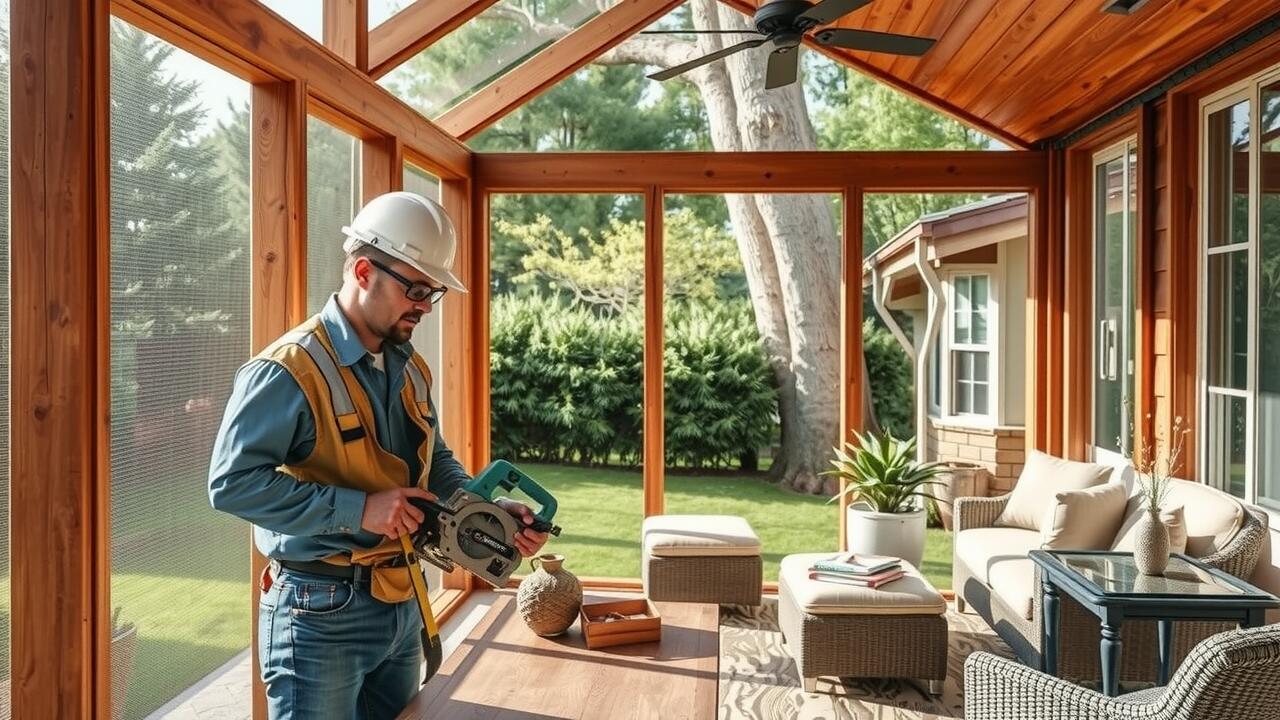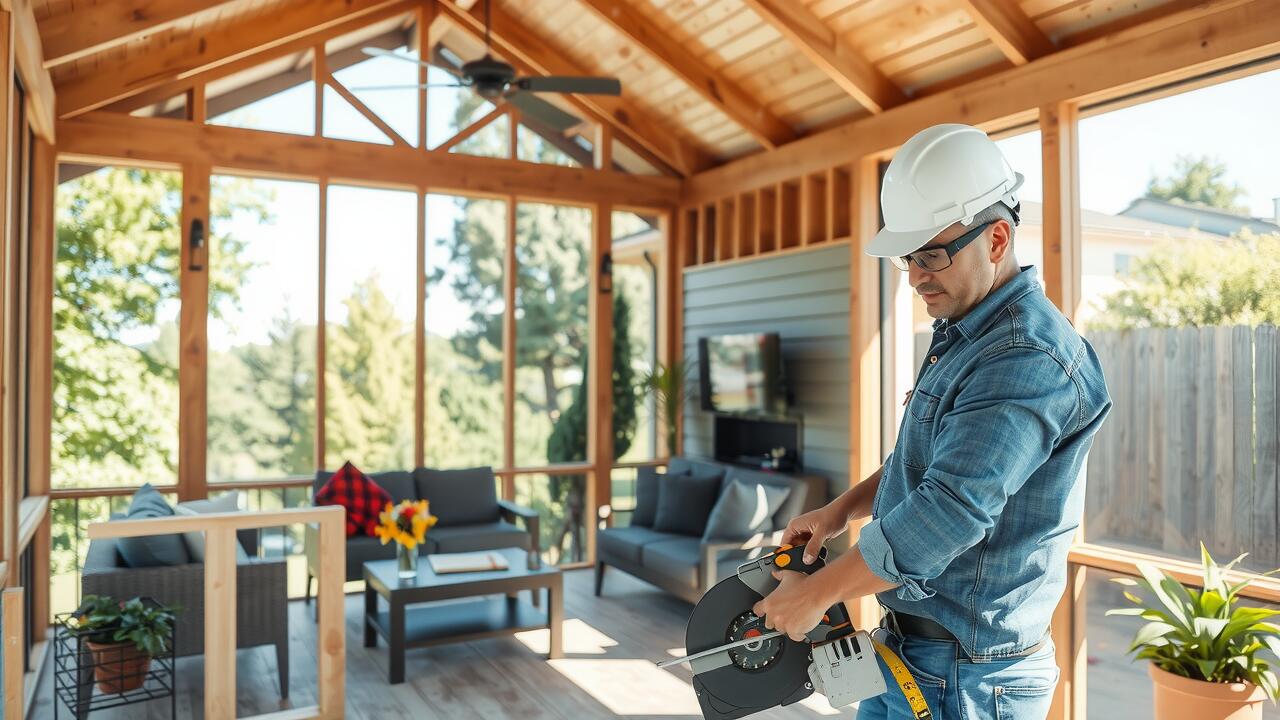
Seasonal Pricing Trends
The cost of building a screened-in porch can vary significantly depending on the season. Typically, spring and summer are peak times for construction projects, leading to higher labor and material costs. Many homeowners prefer to enjoy their new outdoor space during warmer months, which creates a surge in demand for contractors. As a result, prices may increase as suppliers and laborers respond to the heightened activity in the home improvement sector.
Conversely, fall and winter often see a decrease in construction activity, which can result in lower prices for screened-in porches. Homeowners who choose to build during these off-peak seasons may find better deals, as contractors may offer incentives or reduced rates to fill their schedules. Additionally, materials may be less expensive due to lower demand. Timing the construction can greatly impact the overall budget, making seasonal trends an important consideration for prospective buyers.
Best Times to Build
The timing of a screened-in porch installation can significantly affect both the cost and the overall process. Spring and early summer often stand out as the most popular times for such projects. Homeowners are eager to enjoy their outdoor spaces as the weather warms up. Scheduling construction during these months can lead to increased demand, which may drive up prices. However, it’s essential to consider that the moderate temperatures and lower chances of precipitation can facilitate smoother building conditions.
On the other hand, fall can present unique advantages for those looking to build a screened-in porch. Contractors may experience a lull in their schedules as interest shifts back to indoor projects. This shift can result in more competitive pricing and availability. Additionally, constructing during the fall allows homeowners to enjoy their new space as they prepare for winter gatherings. Careful planning around seasonal changes can ensure that a screened-in porch not only fits within budget but also aligns with the intended usage.
Permits and Regulations
Before embarking on the construction of a screened-in porch, it is crucial to understand local building codes and permit requirements. Different municipalities have varying regulations regarding the size, structure, and placement of outdoor additions. Often, homeowners are required to obtain a building permit, especially for projects that involve electrical work or major structural changes. Failing to secure these permits can lead to costly fines or the need to modify or remove the structure altogether.
In addition to permits, homeowners should also consider zoning regulations and any homeowner association (HOA) rules that may apply. These regulations can dictate design elements, setbacks, and height limitations for a screened-in porch. Being aware of these rules early in the planning process can help avoid delays and additional expenses during construction. Evaluating all necessary permits and regulations will ensure a smoother building experience and contribute to the overall budget.
How They Influence Budgeting
Permits and regulations can significantly impact the budgeting process for a screened-in porch. Homeowners should be aware of local codes that might dictate the design and construction methods. Failing to secure the proper permits can lead to fines or the need for costly redesigns, making it essential to factor in these potential expenses early in the planning stages. Local zoning laws might also influence the size and placement of the porch, further affecting overall costs.
Understanding these legal requirements enables homeowners to estimate a more accurate budget. It’s advisable to consult with local building authorities or experience contractors to ensure compliance and avoid unexpected costs. While investing time and effort into navigating these regulations may seem tedious, it can prevent financial burdens down the road and contribute to a smoother construction process for the screened-in porch.
Maintenance Costs After Installation
Maintenance costs after the installation of a screened-in porch can vary widely based on several factors. Regular cleaning is essential to maintain the appearance and function of the structure. This includes washing the screens to remove dust and debris, as well as inspecting and maintaining the framing and flooring materials to prevent deterioration. Depending on the materials used, such as wood or composite, additional costs might arise for periodic sealing or staining.
Long-term financial considerations also play a role in budgeting for maintenance. Homeowners should expect to allocate funds yearly for minor repairs, particularly if the porch is used frequently or exposed to harsh weather conditions. Investing in quality materials during the initial build can reduce future expenditures, leading to a more durable and low-maintenance screened-in porch. Regular inspections can help identify potential issues early, ultimately saving money on more extensive repairs later.
Long-Term Financial Considerations
A screened-in porch can enhance the value of a home while providing a tranquil outdoor space. As a long-term investment, it often appreciates in value, attracting potential buyers who seek versatile living areas. Homeowners can enjoy the benefits of additional square footage without the burden of traditional outdoor maintenance. Regular upkeep, including cleaning screens and addressing minor repairs, typically requires minimal investment, making it a cost-effective feature over the years.
Additionally, the energy efficiency of a screened-in porch can contribute to long-term savings. By creating a buffer against the elements, the porch can help regulate temperatures in adjacent indoor spaces, potentially lowering heating and cooling costs. This reduction in energy expenditure can add further financial benefits, making the initial construction cost more justifiable. Overall, a screened-in porch serves not only as a source of aesthetic enjoyment but also as a savvy financial addition to any property.
FAQS
What is the average cost of building a screened-in porch?
The average cost of building a screened-in porch typically ranges from $15 to $30 per square foot, depending on materials, design, and location.
Are there seasonal trends that affect the pricing of screened-in porches?
Yes, pricing can fluctuate based on seasonal demand, with spring and summer usually being the busiest times for construction, often leading to higher costs.
Do I need a permit to build a screened-in porch?
In most cases, yes, building a screened-in porch requires a permit. It’s important to check local regulations, as they can vary by location.
What are some long-term costs associated with maintaining a screened-in porch?
Long-term maintenance costs may include repairs, replacement of screens, cleaning, and potential upgrades to furniture or fixtures, so budgeting for these expenses is advisable.
How can I save money when building a screened-in porch?
To save money, consider building during the off-season, choosing less expensive materials, or opting for a simpler design that requires less labor.
